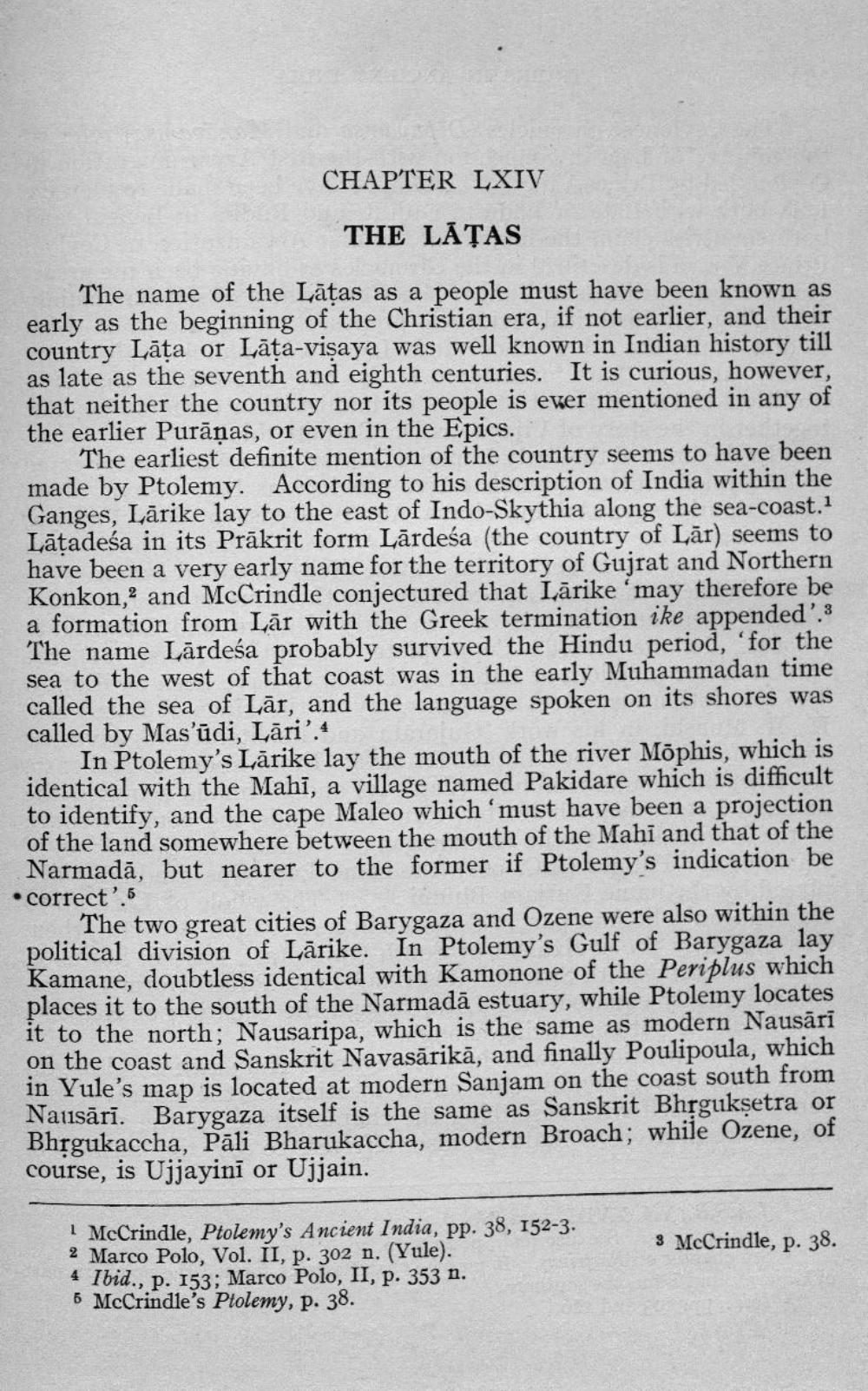________________
CHAPTER LXIV
THE LĀTAS
The name of the Lāțas as a people must have been known as early as the beginning of the Christian era, if not earlier, and their country Lāța or Lāța-visaya was well known in Indian history till as late as the seventh and eighth centuries. It is curious, however, that neither the country nor its people is ever mentioned in any of the earlier Purāņas, or even in the Epics.
The earliest definite mention of the country seems to have been made by Ptolemy. According to his description of India within the Ganges, Lārike lay to the east of Indo-Skythia along the sea-coast.1 Lātadeśa in its Prākrit form Lārdeśa (the country of Lār) seems to have been a very early name for the territory of Gujrat and Northern Konkon,2 and McCrindle conjectured that Lārike 'may therefore be a formation from Lār with the Greek termination ike appended'.3 The name Lārdeśa probably survived the Hindu period, for the sea to the west of that coast was in the early Muhammadan time called the sea of Lār, and the language spoken on its shores was called by Mas'ūdi, Lāri'.4
In Ptolemy's Lārike lay the mouth of the river Mõphis, which is identical with the Mahi, a village named Pakidare which is difficult to identify, and the cape Maleo which 'must have been a projection of the land somewhere between the mouth of the Mahi and that of the Narmadā, but nearer to the former if Ptolemy's indication be • correct'.5
The two great cities of Barygaza and Ozene were also within the political division of Lārike. In Ptolemy's Gulf of Barygaza lay Kamane, doubtless identical with Kamonone of the Periplus which places it to the south of the Narmadā estuary, while tolemy locates it to the north; Nausaripa, which is the same as modern Nausāri on the coast and Sanskrit Navasārikā, and finally Poulipoula, which in Yule's map is located at modern Sanjam on the coast south from Nausārī. Barygaza itself is the same as Sanskrit Bhrguksetra or Bhrgukaccha, Pāli Bharukaccha, modern Broach; while Ozene, of course, is Ujjayini or Ujjain.
3 McCrindle, p. 38.
1 McCrindle, Ptolemy's Ancient India, pp. 38, 152-3. 2 Marco Polo, Vol. II, p. 302 n. (Yule). 4 Ibid., p. 153; Marco Polo, II, p. 353 n. 6 McCrindle's Ptolemy, p. 38.




